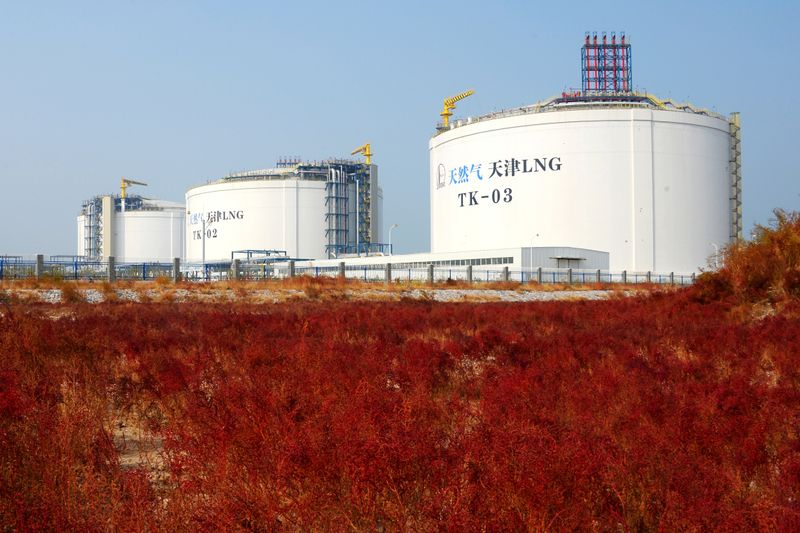Investing.com. — UBS has raised its European price forecasts for the fourth quarter of 2024 and 2025, citing heightened geopolitical risks and supply constraints, despite weak market fundamentals.
The new projections reflect an upward adjustment in terms of both the dollar and the euro, driven by concerns about uncertainty surrounding Ukrainian gas transit flows, volatile weather conditions and a tighter global gas market.
UBS has revised its European gas price forecast for the fourth quarter, increasing it by 4% in dollar terms to $13.5/mmBtu (€42/MWh).
This is due to stronger than expected prices in the third quarter, which averaged $11.5/mmBtu (€36/MWh), despite weak market fundamentals such as lower demand and stable supply.
The price premium is attributed to several factors, including geopolitical tensions, especially related to the conflict in Ukraine, and weather uncertainties.
For 2025, UBS also increased its gas price forecast by 2% in dollar terms to $11.8/mmBtu, reflecting tighter supply conditions globally.
However, in euros, gas prices are expected to decline slightly to €36/MWh due to a stronger euro, although this still represents an increase compared to €34/MWh in 2024.
“After 2025, our price forecasts remain virtually unchanged and we will normalize to around €30 from 2026,” the analysts said.
European gas storage is approaching full capacity, with an occupancy rate of 93%, or 96 billion cubic meters (bcm), on September 10, 2024.
Assuming normal weather conditions, European gas storage is expected to leave the winter of 2024-2025 at the end of March 2025 with a capacity of approximately 50%.
This would be around 7% lower than last year’s level, but still well above the five-year average of 34%.
One of the key dynamics driving UBS’s revised forecast is the increasing dependence on liquefied natural gas (LNG) imports due to limited piped gas supplies.
UBS expects European LNG imports to decline 16% year-on-year to 148 billion cubic meters in 2024, due to lower demand for storage additions and stable gas flows from Norway and Russia.
However, this trend is expected to reverse by 2025, with LNG imports expected to increase by 5 billion cubic meters to 168 billion cubic meters. This increase is necessary to replenish storage and balance the market as pipeline gas supplies become more limited, especially due to the uncertainty surrounding the extension of the Ukrainian gas transit contract.
Norwegian gas flows have been a crucial source of supply for Europe, and UBS has increased its supply forecast for Norway by 5 billion cubic meters to 117 billion cubic meters in 2024 and to 113 billion cubic meters in 2025. However, flows from North Africa and Iran expected to Turkey. will fall, with UBS lowering its combined forecast by more than 10 billion cubic meters.
Meanwhile, Russian gas imports to Europe have been revised upward by 2 billion cubic meters to 20 billion cubic meters in 2024, although they are expected to remain flat at 10 billion cubic meters in 2025 due to the expected expiry of the transit contract in Ukraine.
UBS’s revised gas price forecast underlines the impact of geopolitical and weather-related risks on the European gas market. The uncertainty about the future of Ukrainian gas transit flows is one of the main risks.
If the transit contract is not extended, Europe’s dependence on other sources of supply, especially LNG, will increase, potentially driving up prices.
Weather conditions remain another critical factor. UBS estimates that extreme weather events could reduce demand for heating gas by as much as 14% based on a ten-year historical average.
A particularly cold winter, combined with supply disruptions or increased LNG competition from Asia, could push prices up to around €50/MWh.
Conversely, mild weather conditions and stable or increased Russian gas supplies could lead to lower prices, potentially falling below €30/MWh.
UBS also points to a tightening global gas market as a key driver of higher prices in 2025. Delays and postponements in the construction and commissioning of new LNG liquefaction projects, such as Golden Pass LNG and Altamira LNG, are expected to slow global gas production growth . LNG supply.
As a result, UBS expects tighter supply conditions to continue, supporting relatively strong gas prices in both Europe and Asia.
Outside Europe, UBS has made similar upward adjustments to Asian LNG spot prices. The Japan-Korea Marker (JKM) forecast has been raised slightly for the fourth quarter to $14.5/mmBtu, with a 2% increase for 2025 to $12.75/mmBtu.
In the United States, the Henry Hub price forecast for the fourth quarter has been increased by 14% to $3.0/mmBtu from the previous estimate of $2.5/mmBtu. However, the Henry Hub forecast for 2025 remains unchanged at $3.50/mmBtu.
While UBS sees upside risks to gas prices this winter due to potential supply-side disruptions and cold weather, there are also downside risks.
A combination of mild weather, stable Russian gas flows and subdued demand for LNG from Asia could push prices below the €30/MWh threshold.
Moreover, the future of the Ukrainian transit contract remains one of the most important uncertainties for the European gas market.


